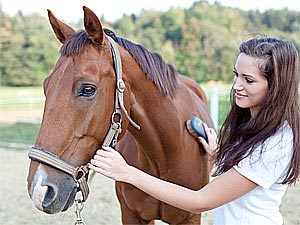 One of the questions I’m often asked is, “Do animals understand time?” And, if so, how?
One of the questions I’m often asked is, “Do animals understand time?” And, if so, how?
In my years as an animal communicator, I have learned that many animals do have a sense and an understanding of time, but it’s often different from our human understanding and awareness.
Sometimes we hear the blanket statement, “Animals only live in the present.” While that can be true, in a particular kind of way (animals are often masters at what we in our human world might call “mindfulness”), it is a generalization that doesn’t necessarily recognize the nuanced way that animals can perceive the passage of time.
In our human culture, we are beginning to understand, through quantum physics and sometimes through our experience, that, at most, what we think of as “time” is actually a relative construct. We rely on a collectively-agreed upon notion of “time” to organize our world and our lives.
What animals have taught me over many years of listening to them, communicating with them, and observing them, is they they understand and track what we call “time” through the rhythms of nature, just as our human ancestors did.
 Each species, and each individual within a species, will have their own understanding of these rhythms, seasons, and patterns. For example, an insect whose lifetime is only a few hours or days in human time may have a very different perspective of “time” than an elephant, or a whale, or a parrot, whose lives are long in human time…sometimes longer than ours. (see the post Spirit Touching Briefly Into Form for a perspective about time, life, and death from a pond damselfly.)
Each species, and each individual within a species, will have their own understanding of these rhythms, seasons, and patterns. For example, an insect whose lifetime is only a few hours or days in human time may have a very different perspective of “time” than an elephant, or a whale, or a parrot, whose lives are long in human time…sometimes longer than ours. (see the post Spirit Touching Briefly Into Form for a perspective about time, life, and death from a pond damselfly.)
People often ask me how they can communicate with their domestic animal companions about things like travel, upcoming family events, moves, or appointments.
Most animals have a clear understanding of day and night, change of seasons, shifting patterns of nature and the elements. In addition, animals who live with humans often have a clear sense of timing and schedule based on the rhythms of daily life. (In my household, all of my dogs know that suppertime is at 5:30, and at exactly 5:25, they will let me know if they don’t think I’m heading toward the kitchen fast enough.) 🙂
Animals whose people keep regular work schedules are often able to understand what a week of time is, as they know that their people are away from home during the week, but home on the weekends, for example.
Animals who live in environments where there are clear changes of seasons have a sense of what a year is, or how long summer or winter is, for example. I’ve had animals tell me, when asked their age, things like “I have lived through two hot seasons” or “I came to my family in the last time it was cold and snow was on the ground.”
So, if you want to communicate with your companion animal about time, try these methods. For example, say you want to let your animal friends know about an upcoming trip; that you’ll be away for a specified amount of time, and when you’ll be back.
Use the pattern of day/night, and give a mental picture of how many day/night cycles you’re going to be away from home. After that, you can also give them pictures about what you want them to know about their care while you’re away: for example, a trusted housesitter coming to take care of them, a trip to the boarding kennel, extended time with a friend who cares for them, etc.
 If the animal knows and understands your routines, such as a week/weekend or other kind of recurring schedule, you can also give them the sense and feeling of this as well. For example, if you want to let an animal know that you’ll be away for two weeks, you can give them this thought/picture/feeling: “I’ll be away the same amount of time as this pattern: work week/weekend, work week/ weekend.”
If the animal knows and understands your routines, such as a week/weekend or other kind of recurring schedule, you can also give them the sense and feeling of this as well. For example, if you want to let an animal know that you’ll be away for two weeks, you can give them this thought/picture/feeling: “I’ll be away the same amount of time as this pattern: work week/weekend, work week/ weekend.”
You can communicate to your animal friends using the universal language of telepathy. Since telepathy is their primary language, you can trust that even if you aren’t confident in your ability or fluency, they will likely be able to understand your communication. Use pictures, feelings, even words to communicate to them what you would like them to understand. Be aware that it’s important for your communication to be congruent (i.e., that your words, thoughts, intentions, and feelings line up with each other.)
Communicating with animals about time is fascinating…feeling what they know, understand, and perceive can expand our awareness and perception of time and its fluidity. Communicating with animals about time can also help them to understand human patterns and upcoming events.
If you’d ready to dive in and learn more, check out the Beginning Animal Communication Open Access Class. I’d love to be your guide in sharing the best tools I know for communicating clearly and accurately with animals and all life!


